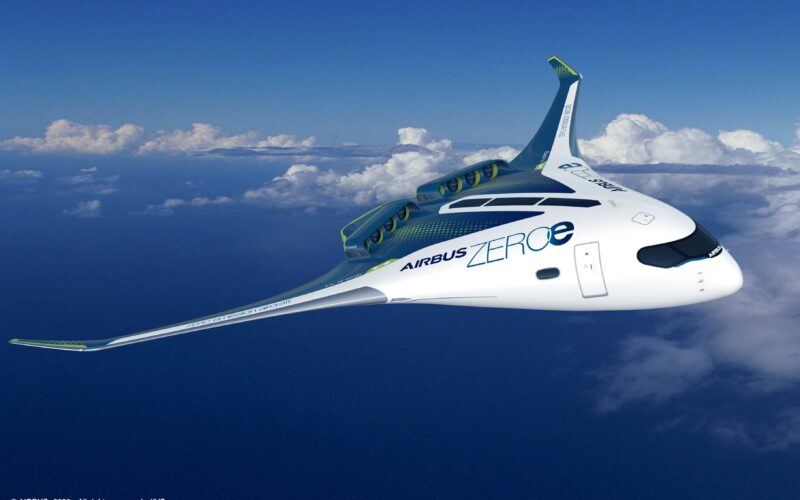Determined to win the race to a “zero-emission aircraft” by 2035, Airbus unveiled three hydrogen-powered concepts the company is currently working on.
“This is a historic moment for the commercial aviation sector as a whole and we intend to play a leading role in the most important transition this industry has ever seen,” Guillaume Faury commented in a press release on September 21, 2020.
The three zero-emission projects that rely on hydrogen as a primary power source are all codenamed ZEROe.
The first concept presented is a conventional aircraft that could transport up to 200 passengers with a range of over 3,500 kilometers (2,000 nautical miles). The liquid hydrogen tank, which powers the modified gas-turbine engine running on hydrogen, would be fitted in the rear of the fuselage.
The second aircraft being studied is a smaller propeller plane that would be able to carry around 100 passengers, for shorter journeys. The regional airliner would be “powered by hydrogen combustion in modified gas-turbine engines.”
However, the third concept aircraft is far more disruptive. Airbus imagines a “blended-wing body” design with performances similar to its conventional airliner. The fuselage would allow to study a completely different configuration for hydrogen storage and propulsion.
“Ambitious but doable”
Hydrogen power was a “priority strategic axis” in Airbus’ researches, Faury said in an interview with Le Parisien. But the CEO estimates that the development would require “several tens of billions of euros,” hinting at the need for governmental support.
Airbus could receive the financial support it needs from France. On September 4, 2020, the French government detailed its €100 billion recovery program for the country’s economy, in which €7 billion were dedicated to the hydrogen power sector.
The French Minister of the Economy and Finance Bruno Le Maire said at the time he expected the sector to “achieve a carbon-neutral aircraft in 2035″, while industry experts usually forecasted it to appear around 2050. The deadline of 2035 is “ambitious but doable”, according to Eric Trappier, CEO of Dassault Aviation and President of the French Aerospace Industries Association (GIFAS).

